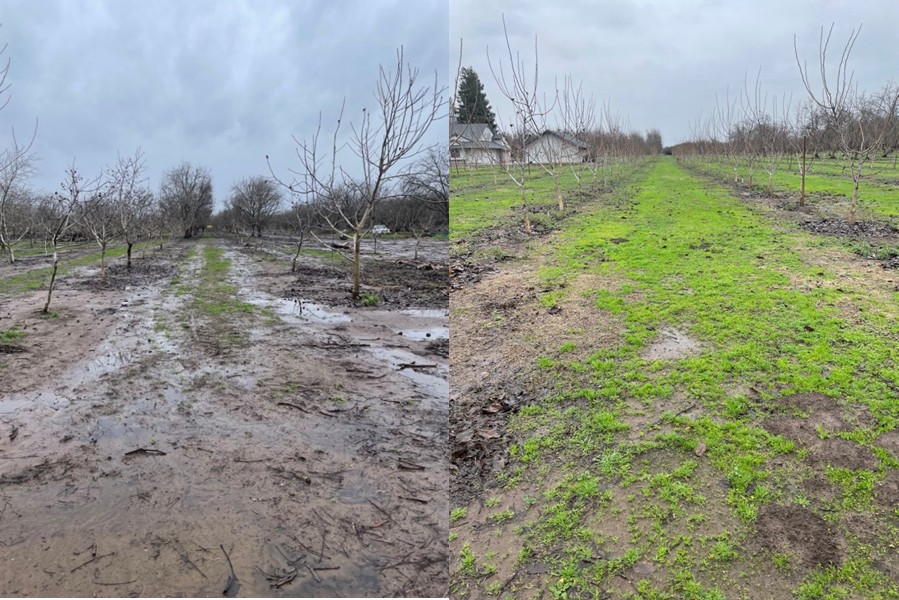Curt Pierce, Irrigation and Water Resources Advisor for Glenn, Tehama, Colusa, and Shasta Counties
Clarissa Reyes, Orchard Systems Advisor, Sutter-Yuba, Butte & Placer Counties
Weather forecasts for the upcoming winter months are leaning heavily toward another wet and cold winter due to the predicted El Niño conditions. Unlike last year, however, our reservoirs are already full, or close to full, going into this new water year. This is true for storage basins across the northern Sacramento Valley, due largely to the heavy mountain snowpack from last winter being ideally time-released over the summer months. Should El Niño bring heavy rainfall back to the region, any on-farm water capture that can be done should be done to keep as much water locally banked as possible. The weeks immediately following harvest present the best time of the year to plant cover crops to reap their various benefits in the months ahead.
So what are those potential benefits? Well, in the context of cold, winter rains, there are two primary components of orchard management that you should be considering:
Infiltration
Last winter, we published the article Vegetation for Infiltration which offered guidance on how to best capture any winter rain that may fall after several consecutive years of drought. Of course, by the time the article was published after the holidays, the rain had started to fall, and continued to fall, and it became clear just how large a role vegetation in the orchard can play during sustained rain events.
Standing water in an orchard indicates that the rate of precipitation (rainfall or irrigation) is exceeding the infiltration rate of the soil. Last year, orchards with vegetation in the middles typically had far less standing water than those with bare soil. Standing vegetation physically slows the flow of water across the orchard floor, and the roots of any native or cropped vegetation create downward channels, deep into the soil profile. These channels increase the rate at which water percolates through these soils when compared to soils left bare (Figure 1). The combined effect is overall increased infiltration and water storage in the soil profile and underlying aquifer due to reduced runoff from the soil surface.
Frost Protection
Moisture in the soil profile helps to hold soil temperatures slightly higher than that of dry soil. However, if water has ponded on the soil surface, the sun’s heat is reflected up and away so that it cannot further warm the soil. During nighttime hours, when the sun has set and temperatures drop, those few degrees of higher soil temperatures can make the difference in frost damage being sustained by your trees or not. With vegetation in the orchard, water from precipitation (or irrigation) can be more effectively introduced to the soil profile where it can aid in this warming effect. You will want to keep any vegetation in the orchard managed, though, as taller stands will block the sun’s rays and keep them from warming the soil just as ponded water can. Aim to keep any vegetation from growing much over 2″ or so by mowing as needed – hopefully when the orchard is dry to prevent any unnecessary compaction from equipment in the lanes.
Check out the Cover Crop Best Management Practices guide from the Almond Board of California for more detailed guidance and information.



Leave a Reply